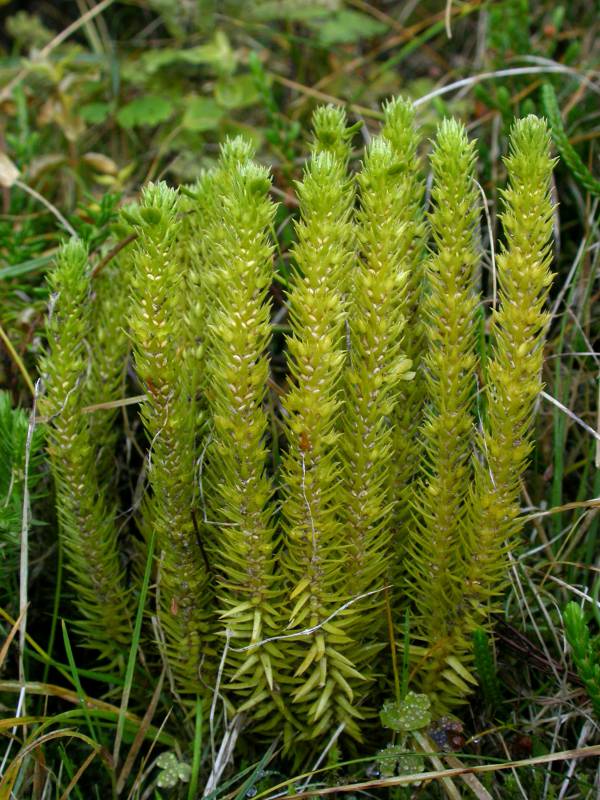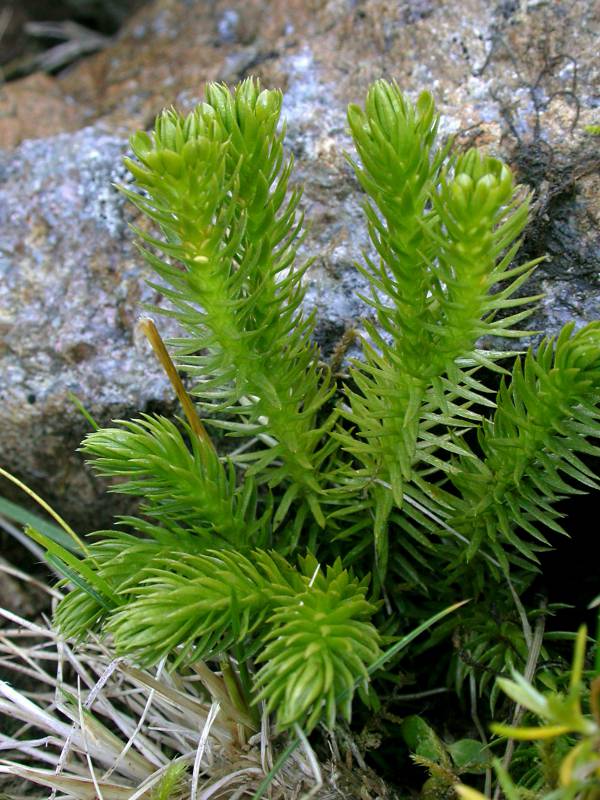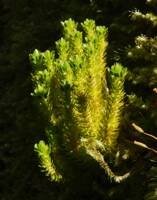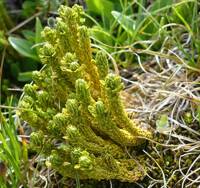Distribution: Occurring in the Olympic Mountains and Cascade Range in Washington; Alaska to Washington, east to Montana; also in Wyoming and Colorado, scattered across northern Canada and on Greenland.
Habitat: Subalpine and alpine meadows, heath, and rocky slopes. Usually at high elevations.
Origin: Native
Growth Duration: Perennial
Conservation Status: Not of concern
Large moss-like plants with erect, mostly unbranched stems from a creeping base; stems 8-11 cm tall.
4-7 mm long, needle-like, whorled, usually shiny yellow-green, spreading to appressed. Lower leaves largest, lanceolate; upper leaves smaller, ovate.
Spores: Spores contained in sporangia, which resemble small tan kidney-shaped pouches distributed along much of stem, one per leaf axil. Also with gemmae (small flattened vegetative propagules) produced throughout mature portion of stem.
H. continentalis can be separated from our other two Huperzia species by the shiny yellow-green lanceolate leaves, gemmae produced along much of stem, and the subalpine to alpine habitat.
In Hitchock & Cronquist\\\'s Flora of the Pacific Northwest, all 3 of our Huperzia species are treated together under the name Lycopodium selago. See Flora of North America, Vol. 2, for an updated treatment of our species.
Publication: Systematic Botany 41(4):894-901. 2016.
Lycopodium selago L., misapplied [HC]
PNW Herbaria: Specimen records of Huperzia continentalis in the Consortium of Pacific Northwest Herbaria database
WA Flora Checklist: Huperzia continentalis checklist entry
OregonFlora: Huperzia continentalis information
E-Flora BC: Huperzia continentalis atlas page
CalPhotos: Huperzia continentalis photos







